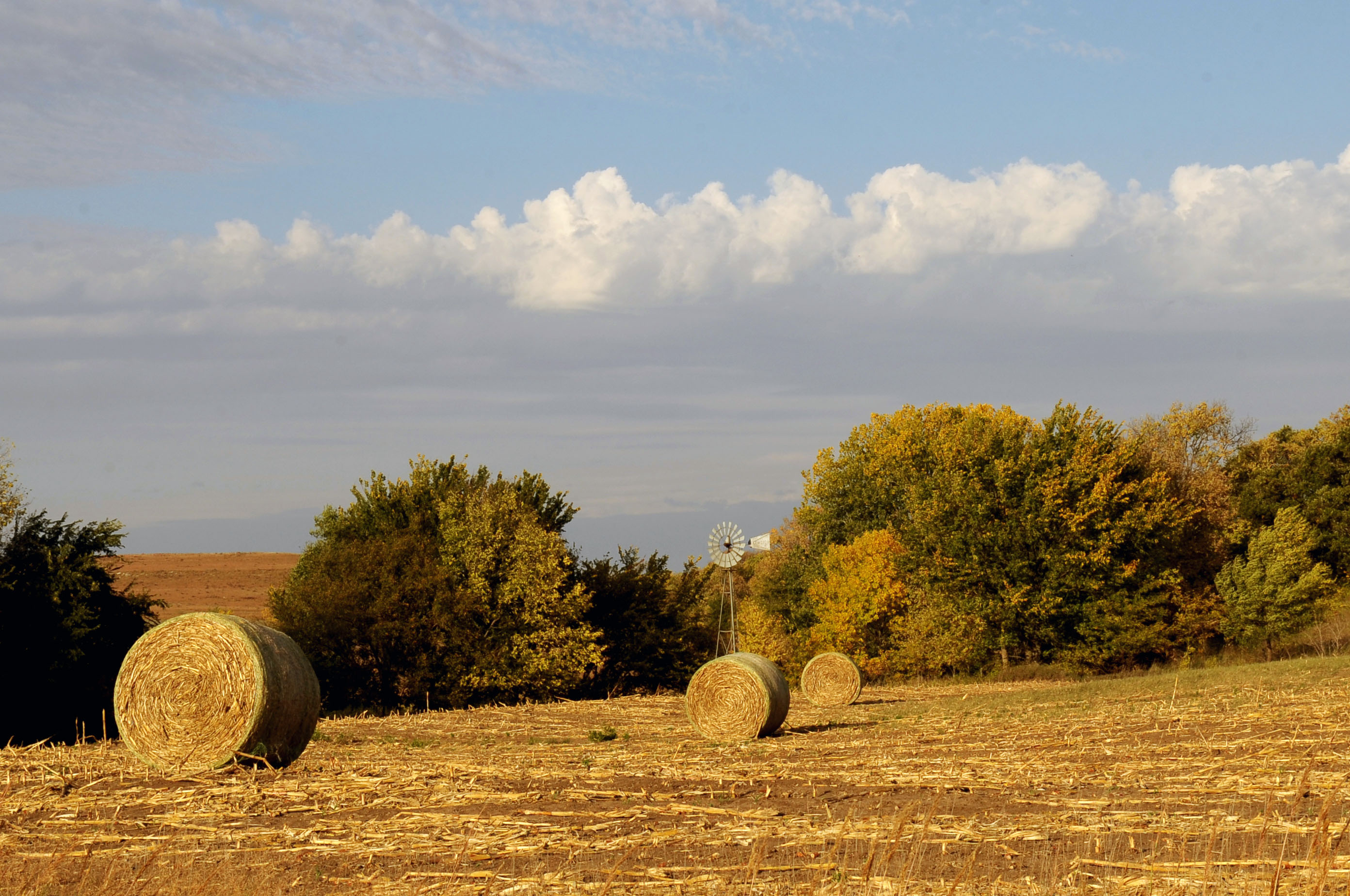
Corn stalk bales can be used for bedding or as a feed resource with supplementation. | Download this photo.
Cattle Chat: Feeding corn stalk bales
K-State cattle nutritionist explains how corn stalk bales can be a feed resource
Nov. 14, 2023
By Lisa Moser, K-State Research and Extension news service
MANHATTAN, Kan. — When eating a salad, imagine how it might taste if all there was to eat were the stems of the plant. Not very appealing, right?
Similarly, cattle that are offered corn stalk bales to eat in place of hay also often find that to be less palatable, said Phillip Lancaster, beef cattle nutritionist for the Kansas State University Beef Cattle Institute.
Speaking on a recent Cattle Chat podcast, Lancaster said there is an increase of corn stalks being baled as a feed resource this year because of the shortage of hay and the decrease in pastures available for fall grazing due to a lack of moisture.
“Traditionally, grazing cattle in the late fall on harvested corn fields can be an option to extend the grazing season because cattle can eat the husks and leaves, which have a decent nutritional value,” Lancaster said. “However, this year farmers are baling up the corn stalks after they’ve harvested the crop, which leaves only the stalks that are lignified and indigestible.”
He said that when cattle are offered a corn stalk bale, they will consume the resource at a higher proportion of stalks than they would if they were just grazing the field.
“Producers feeding those bales will have quite a bit of wastage unless they grind them and add them to a mixed ration,” Lancaster said.
For producers who need to use this as a feed resource, Lancaster said they need to supplement the cattle with protein.
He added: “For cows going into their third trimester this winter, their maintenance requirements are higher so along with protein they will also need to be supplemented with energy as well.”
Additionally, there is a potential health concern with bales that were made from a failed corn crop when fed to the cattle, Lancaster said.
“If nitrogen fertilizer was put on the crop in the spring and then it failed, the plant may still be holding that nitrogen,” Lancaster said.
In that case, producers will need to test the bales for nitrates, according to Lancaster.
To hear the full discussion, listen to the Cattle Chat podcast online or through your preferred streaming platform.

